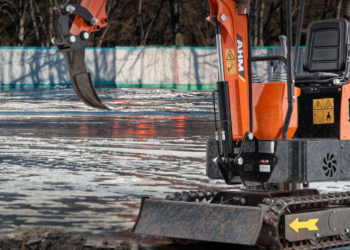Working with electrical equipment poses serious risks, especially when it comes to arc flash. Arc flash refers to the explosive release of energy that occurs when a high-amp current passes through air between conductors. This sudden blast generates an intense rise in temperature, pressure, sound, and light.
The results can be catastrophic, causing severe injuries and damage. That’s why it’s critical for anyone working around electrical systems to understand electrical arc flashes, their causes, and key prevention methods.
What Triggers an Electrical Arc Flash Event?
Several factors can trigger an arc flash incident, including dust, dropped tools, accidentally touching energized parts, and electrical equipment failures. Serious risk factors include corroded connections, improper work procedures, lack of maintenance, and inadequate training. Any of these can lead to a dangerous arc flash.
Some common causes include:
- Faulty equipment such as worn insulation and loose connections
- Accidental contact with energized conductors
- The buildup of conductive dust or corrosion
- Dropping tools or other items onto an energized system
- Unintentional ground faults through tools or the human body
- Interruption of shielding gases in enclosed equipment
Without proper arc-rated PPE, workers could experience severe or even fatal injuries from the intense heat, pressure waves, and flying shrapnel. Preventing electrical arc flash begins with identifying potential causes and taking proactive steps to minimize risk.
Effective Prevention Strategies
Fortunately, worksites can implement multiple prevention strategies to reduce arc flash hazards. A layered approach offers the best protection, combining engineering controls, safe work practices, administrative actions, and appropriate PPE.
Some of the best engineering controls include ensuring proper equipment design, installation, and maintenance, installing current-limiting devices, arc-resistant equipment, and lockout/tagout procedures. For safe work practices, de-energizing equipment, properly grounding conductors, checking for voltage, avoiding conductive materials, and keeping workspaces clean are critical.
On the administrative side, assessments, training, enforced procedures, warning labels and the like reduce risk. Diligent precautions and practices such as de-energizing lines, checking for voltage, and keeping workspaces clean add protection.
With a comprehensive electrical arc flash safety program, worksites can significantly reduce their risks. Be sure to partner with a qualified firm when conducting arc flash studies and implementing labels. With diligence and proper precautions, arc flash incidents don’t have to occur.
The Importance of Arc Flash PPE
Personal protective equipment provides essential defense for electrical workers. OSHA requires employers to conduct arc flash assessments to determine appropriate PPE levels. Common arc-rated gear includes:
- Fire-resistant clothing such as coveralls, shirts, and pants
- Hard hat and face shield
- Insulated gloves and tools
- Leather work boots and hoods
- Switching coats, jackets, and blankets
PPE must be regularly inspected and replaced when damaged. Only use lab-tested, arc-rated PPE that meets current consensus standards. Partner with reputable vendors and conduct thorough training to ensure correct use.
Staying Vigilant
Thanks to increased awareness and improved safety practices, arc flash injuries have declined in recent years. However, serious risks remain. Thousands of electrical arc flash incidents still occur annually, underscoring the need for ongoing training and vigilance.
By understanding the hazards and implementing the right controls, workers can help prevent catastrophic electrical accidents. With smart precautions, worksites can maintain the safety of their most valuable assets – their workers.







